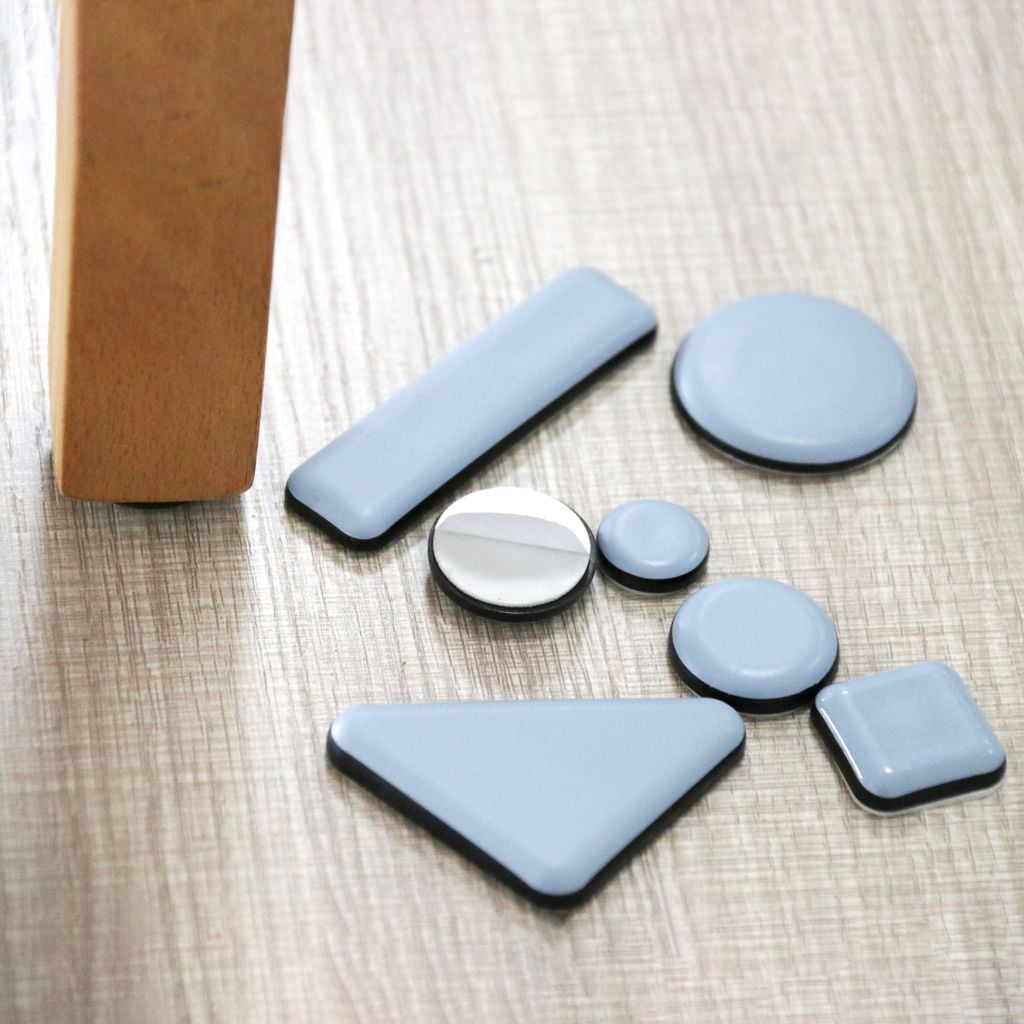How to Choose Furniture Sliders?
Are you tired of dealing with scratched floors or struggling to move heavy furniture? Furniture sliders can be a lifesaver, helping you move items easily while protecting your floors from damage. However, with so many options available, it can be overwhelming to pick the right one.
The key is understanding which material works best for your floor type, what size and shape you need for your furniture, and whether reusability is a priority for you. Let’s break down everything you need to know to make the perfect choice.
Which Material Should You Choose?
The base material of the furniture slider is crucial, as it directly impacts how it interacts with your floor. Two of the most common materials are PTFE and plastic, each with its own strengths for different types of flooring.
1. PTFE (Polytetrafluoroethylene) – The Smooth Operator for Hard Floors

PTFE, commonly known as Teflon, is famous for its low friction and smooth gliding properties. If you have hard surfaces like hardwood, tile, laminate, or vinyl, PTFE sliders are your best bet. They allow heavy furniture to glide effortlessly without scratching or leaving marks on the floor.
Advantages of PTFE sliders:
- Extremely low friction
- Ideal for heavy furniture
- Long-lasting and durable
- Leaves no marks on hard floors
Best for: Hardwood, tile, laminate, vinyl, and stone floors.
2. Plastic Sliders – A Versatile Solution for Carpeted Floors

Plastic furniture sliders are more common and versatile, working particularly well on carpeted floors. They help furniture glide across thick rugs or carpets without pulling or getting stuck. Plastic sliders are also great for furniture that’s not too heavy but needs regular movement.
Advantages of plastic sliders:
- Easy movement on carpets
- Affordable and widely available
- Good for lighter furniture
Best for: Carpeted surfaces or rugs.
What Size and Shape Should You Consider?
Choosing the right size and shape of your furniture slider is just as important as selecting the right material. Here’s why:
1. Size Matters
The size of your furniture sliders should match the size of your furniture legs or base. If the slider is too small, it won’t distribute the weight evenly, which can lead to scratches or damage to your floors. On the other hand, if it’s too large, it may look bulky or not fit properly under smaller furniture.
Guidelines for choosing the right size:
- Small furniture (e.g., chairs, stools): Use smaller sliders (typically 1-2 inches in diameter).
- Large or heavy furniture (e.g., sofas, wardrobes): Choose larger sliders (3-4 inches in diameter).
2. Shape – Round vs. Square
Furniture sliders generally come in two shapes: round and square. The shape you choose depends on the shape of the furniture leg and how frequently you need to move the furniture.
- Round sliders: Best for chairs, tables, and stools with round legs. They’re ideal for frequent movement since they allow easy multidirectional gliding.
- Square sliders: Suitable for furniture with square or rectangular legs, such as couches, dressers, or desks. These provide better stability and are great for heavier items that don’t need to be moved as often.
Reusability: A Worthwhile Consideration
When it comes to sliders, you’ll also need to decide whether you want reusable or single-use options. Here’s how they compare:
1. Reusable Sliders – Built to Last
Reusable sliders are made from durable materials like PTFE or plastic, designed for long-term use. You can place them under your furniture and keep them there for years, or move them from one piece to another when needed. This makes them a great option if you frequently rearrange your furniture or want a permanent solution to floor protection.
Benefits:
- Long-lasting and durable
- Easy to reposition
- Cost-effective in the long run
2. Single-Use Sliders – Quick Fixes for Temporary Moves
Single-use sliders are generally adhesive-backed and are meant for temporary use. These are perfect if you’re moving or rearranging furniture for a one-time event. They stick to the furniture base and help you glide your items across the floor, but they aren’t designed to stay in place permanently.
Benefits:
- Ideal for temporary or occasional use
- Quick and easy to apply
- Affordable for short-term needs
How to Install Furniture Sliders
Now that you know which material, size, and shape are right for you, it’s time to think about installation. Luckily, most furniture sliders are simple to install:
- For adhesive sliders: Simply peel off the backing and stick the slider to the bottom of your furniture leg.
- For non-adhesive sliders: Lift the furniture slightly and place the slider underneath the leg, making sure it’s centered for stability.
For heavier furniture, you might want to ask for help to avoid injury while lifting.
Conclusion
Choosing the right furniture sliders doesn’t have to be complicated. The key is understanding your specific needs:
- PTFE sliders are perfect for hard floors like hardwood or tile, offering smooth and scratch-free movement.
- Plastic sliders are ideal for carpets, allowing you to glide furniture over thick or soft surfaces.
- Match the size and shape of your slider to the furniture leg for optimal performance.
- Decide if you need a reusable slider for long-term protection or a single-use option for short-term moves.
By selecting the right furniture slider for your floors and furniture, you’ll protect your home and enjoy hassle-free movement for years to come.
